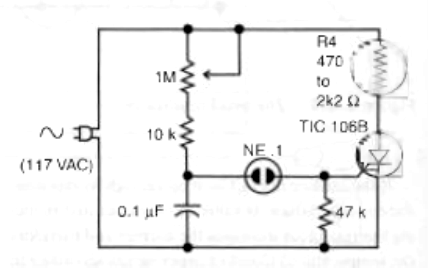Note: This article was originally written in Portuguese for the author's website in 2004, and later (2006) used in the book Bionics for The Evil Genius. Some changes to the original text were introduced.
Using these senses, we sample our environment for information. These senses are very important in nature because many living beings depend on them to find food, for sexual purposes, and even defense. Living beings are continuously testing the quality of the air they breathe, and they use this sense to be informed of other information, such as the proximity of food or another individual.
Our sensory systems can detect only chemicals having certain properties. For instance, odor molecules must be small enough to be volatile (or dispersed in the air) so that they can vaporize, reaching the nose and then dissolving in the mucus. Since volatile molecules can travel through the air, smell, unlike taste, can signal long distances.
Our olfactory sense also serves a recognition function. All individuals have their own unique smell (some more pleasant than others!) and can recognize and be recognized by the smell. Some estimates suggest that we can distinguish around 10.000 different smells. In addition, it has been proposed that smell can influence mood, memory, emotions, mate choice, the immune system, and the endocrine system (hormones).
Experiments have been made in bionics to help anosmics (people who have lost some or all of their sense of smell) recover this sense. This process entails connecting their olfactory nerves to bionic sensors and has led to good results.
Although smells are complex, it was discovered that only three chemical substances that are mixed in some proportion form them. The combination, as in the case of basic colors, results in all the smells we can sense.
Based on this fact, a company called TriSenx (www.trisenx.com) launched a device that plugged into a computer and that could reproduce any smell based on those basic substances, as suggested by Figure 1.
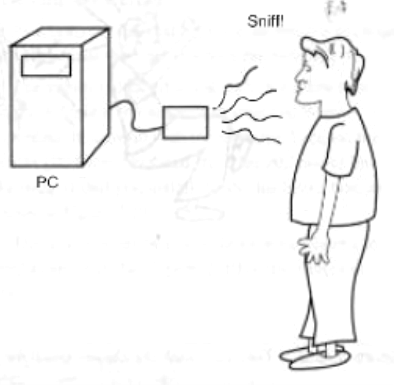
What we are going to describe in this project is a simple electronic device that can produce smells based on chemicals. A circuit produces an artificial smell to interact with the smell sense of living beings, providing the bionic characteristic of the project.
Imitating nature, we can generate smells for our comfort, to scare animals and or other humans, or to add realism to a presentation. The smell chosen depends on the application needed. We believe that the evil genius will make a good choice, not as suggested by Figure 2.
The circuit is timed and powered from the AC power line. No dangerous substances are used, although you can use them (see Figure 3.18.2), and the application depends only on the imagination of the evil genius. The main applications are provided in the following section.
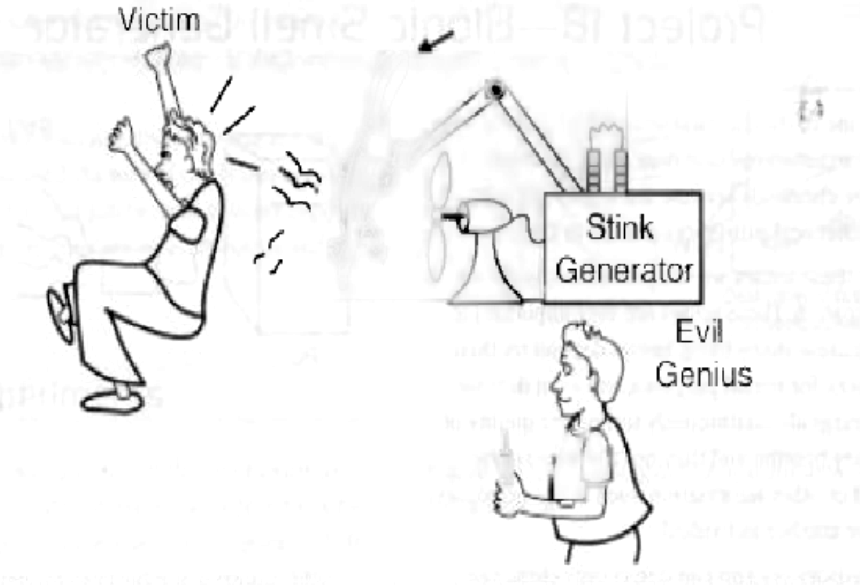
Bionic Applications for the Project
Animals use smells to scare, attract, or even as a very efficient defense weapon. A device that can generate any smell can he used in many applications, such as the following:
• Produce pleasant smells in places where naturally bad smells are present (kitchens, rest-rooms, places where people smoke, etc.).
• Show how smells can be produced by a bionic device.
Create fantastic smells by the combination of basic smells.
• Function as part of other projects that create effects in ambient (light, sounds, etc.).
How the Circuit Works
The smells are produced by a small bottle of essence where a wick (like one from a candle) is heated by a resistor. When the resistor is powered, the heat vaporizes the essence, and smell is spread into the air, thanks to the presence of a small fan, as shown in Figure 3.
To prevent the resistor from being constantly heated, a timer circuit powers it at regular intervals. This circuit is formed by a 555 integrated circuit (IC) in the astable configuration with a frequency-adjusting potentiometer. Using this potentiometer, the evil genius can adjust the intervals between the smell productions according to the application.
The circuit is powered from the AC power line, and for small and medium areas, power consumption is very low. The only concern the evil genius has is filling the bottle of essence when it becomes empty.
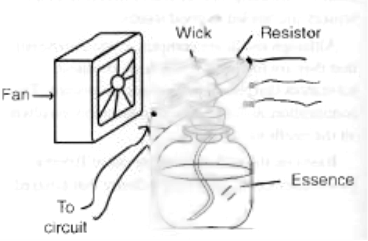
How to Build
The electronic part of the project is very easy to mount because no critical parts are used. Figure 4 shows the complete diagram of the bionic smell generator.
The circuit mounts on a printed circuit board (PCB), as shown by Figure 5. R1 is the critical component of the project. It must produce heat that is hot enough to vaporize the essence in the wick.
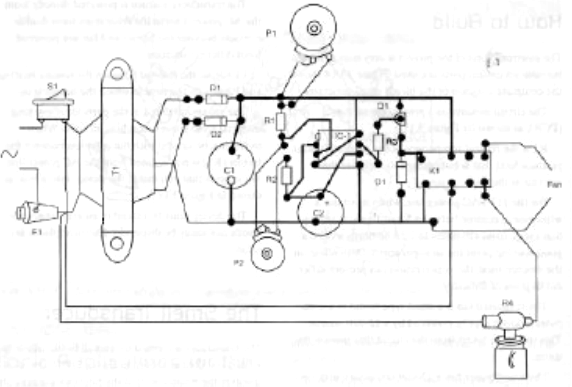
For the 117 VAC power line, which must use a wire-wound resistor between 5 and 10 watts, values that range from 470 ohms to 2.2 kilo-ohms will be a good starting point for an experiment. Depending on the essence used, the vaporization can present different degrees of difficulty.
The suggested fan is a small type found in a computer's power supply, powered by a 12-volt source. This voltage is taken from the circuit that powers the timer.
The transformer has a 12-volt secondary with currents that range from 500 to 800 milliamps, enough to drive the relay and the fan.
The transducer resistor is powered directly from the AC power line, so the relay must have double contacts because the heater and fan are powered from different sources.
P1 adjusts the interval between the resistor hearings, and P2 adjusts the time in which the heater is on.
The values indicated in the parts list allow time intervals from some seconds to minutes. When mounting, be careful with the isolation because the heater (R1) is not isolated from the AC power line. We suggest that you install the device into a box, as shown in Figure 6.
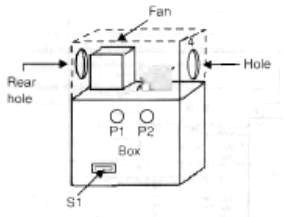
The device must be placed in an area where the smells can easily be dispersed. Elevated places are ideal.
The Smell Transducer
The transducer is formed by a small bottle where the wick is installed as shown in Figure 7. The wick involves the resistor so that the heat can vaporize the essence. Cotton wicks are ideal because they can easily absorb the essence.
The Essence Choice
Choosing the smell, you want to create is also an important part of the experiment. Floral essences can he found in supermarkets, along with essences of smells of food. Depending on the application, you can use bottles that contain different smells.
Of course, the evil genius will probably be thinking about producing something that stinks. You can have some bottles of these essences (argh!), but take care, because if the experiment escapes your control, we are not responsible for the consequences.
Testing and Using
Fill the transducer with the essence and turn on the circuit. Then adjust P1 and P2. The fan will turn on and off in regular intervals. Adjust the desired intervals to fill the area with the desired smell.
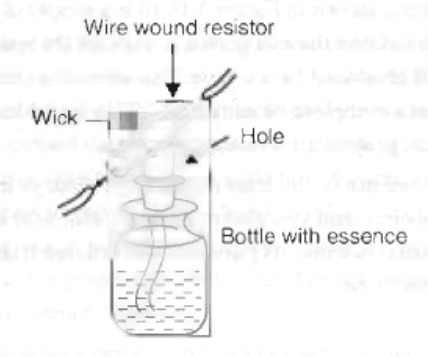
If the resistor doesn't heat up enough to vaporize the essence, reduce its value. (Remember that reducing the resistance increases the current and therefore the temperature.) Conduct experiments according to the essence, and be careful not to produce excess heat, which will burn the resistor. Temperatures up to 100°C are normal for wire-wound resistors. but they can consume too much essence.
After the tests, the evil genius can install the smell generator.
Parts List
Required Parts
IC-1: 555 integrated circuit timer
Q1: BC558 general-purpose PNP transistor
D1, D2, 03: 1N4002 silicon rectifier diodes
R1, R2: 22 kΩ x 1/8 w resistor, red, red, orange
R3: 2.2 kΩ x 1/8 W resistor, red, red, red
R4: 470 Ω x 2.2 kΩ x 5 W wire-wound resistor (see text)
P1: 1 MΩ potentiometer, lin or log
P2: 470 kΩ potentiometer, lin or log,
C1, C2: 1,000 µF x 25 V electrolytic capacitors
K1: 12 V x 50 mA DPDT relay
T1: 12 t 12 V x 500 mA to 800 mA transformer
S1: On/off switch
M1: 12 V fan (see text)
F1: 1 A fuse
Other: PCB, box, fuse holder, material for the transducer (bot-tle, essence, wick, etc.), power cord, wires, solder, etc.
Additional Circuits and Ideas
The device described in this project is only a basic idea. Starting from here, the evil genius can easily upgrade the project, adding many resources, and some additional ideas are provided in this section.
Selecting Smells
A simple circuit that allows the manual selection of smells is shown in Figure 8. You must mount the resistor and fans with many bottles of essences, which are selected by switches. Another idea is to create an automatic selector controlled by a computer, as shown by Figure 9. This is a version that would be ideal for theaters, where realism can be added to the experience of watching a movie.
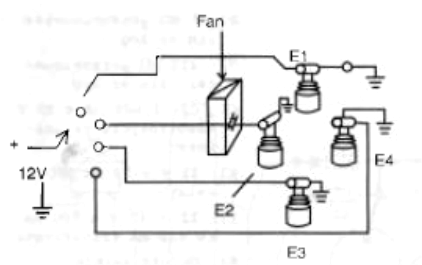
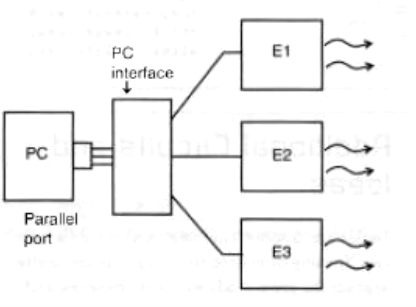
Other Circuits
The circuit shown in Figure 10 is a simple dimmer that allows the evil genius to control the amount of smell produced by a sensor. This circuit can stand alone as a complete bionic generator, or he added to the basic project for a timed operation.
The resistor in the transducer is the same as in the basic project, and you must be careful with its installation because its parts are not isolated from the AC power line.
